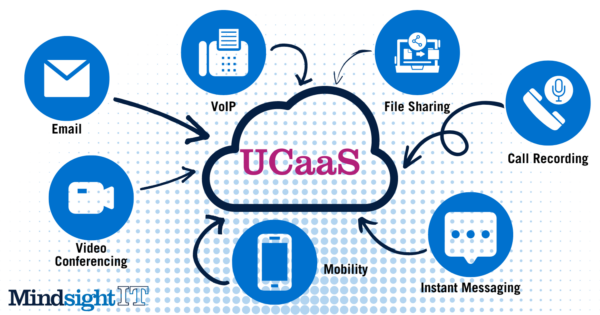June 13, 2023
Despite the spate of recent tech layoffs that jettisoned tens of thousands of workers, there are still far more IT job openings than people to fill them. That’s largely because they’re in demand nearly everywhere, not just at tech companies like Google and Meta. Even traditionally non-tech organizations, the cliché goes, are to some degree tech-centric these days.
“The tech talent crunch is far from over,” Mbula Schoen, Senior Director Analyst at Gartner, said in March. “Current demand for tech talent greatly outstrips supply, which Gartner expects will be the case until at least 2026, based on forecast IT spend. Contrary to what we’re seeing in the headlines, many of those being impacted by layoffs are in business functions, rather than tech roles. Additionally, there are increasingly opportunities for IT jobs outside traditional tech companies, so it’s important to look beyond just the tech provider community to truly grasp the state of the tech talent crunch.”
In light of increasing cloud migration and the growing popularity of UCaaS systems, to name just a couple of ongoing trends, there remains a huge need for expert administrators to implement and oversee these complex advancements. And the experts know it. Not only can they demand high salaries, they have no qualms about going elsewhere if they don’t get quick promotions and generous pay bumps. Greater flexibility and less work overload are factors as well.

“Although some enterprises and service provider firms rank higher or lower on the attrition average of 23% for turnover rate, this average is significant,” Everest Group CEO Peter Bendor-Samuel wrote in Forbes. “It means companies lose approximately one-quarter of their talent each year – the elephant in the room.
“This makes it extremely daunting to keep persistent teams,” he continued. “These are IT and engineering staff that remain on a team focused on the same tech stack or digital platform over time. Companies have demonstrated that persistent teams are far more productive and capable in supporting and evolving their technology.”
Retaining Talent
Proposed retention solutions abound. For Bendor-Samuel, it’s about “rethinking compensation, the working environment and career paths.” For Max Nirenberg, chief revenue officer and managing director for North America at Commit USA, it’s about doing more with less and, as he told Spiceworks.com early this year, looking for “new ways to manage rising costs [for things like recruitment, salaries, employee retention, office space and equipment] while continuing to innovate with technology and meet consumers’ rising expectations.”
There’s no easy way to do that, Nirenberg went on, which is why “many hi-tech businesses are currently reassessing how they can continuously scale resources based on real needs, both in the skillsets required and the number of experts needed at one time… Likely, this will result in more [tech] layoffs in the short term, but the employment situation will stabilize, while costs for retaining top talent in house will continue to soar.”

Alternative Solutions
A longstanding solution, one that’s arguably more applicable than ever, is to stop hiring in-house talent and farm the work out to a trusted MSP. For many big companies that’s infeasible, but it can be a great option for SMBs. According to Rajat Bhargava, co-founder and CEO of JumpCloud, “SME technology needs to evolve. Managing those changes requires a steady IT hand. Fortunately, MSPs can accommodate changes to tech stacks or tech staff, which is likely why 78 percent of IT leaders note that their MSPs impact their business growth. Onboarding, securing activity, 24/7 support, update and release management, and reporting are just a few of the many services MSPs can provide, giving SMEs a breadth of functionality without the complexity or cost of enterprise solutions.”
As Gartner’s Mbula Schoen sees it, the IT talent shortage continues “unabated” with no definite end in sight. “The IT skills shortage is critical,” she says, “with CIOs losing their talented employees faster than they can hire them. In key function areas, like data science, software engineering and cybersecurity, the talent supply remains as tight or tighter than before. IT leaders should expect increased competition in many talent pools and that the cost of IT talent will continue to rise.”
For large enterprises, that means adjusting their recruiting and retention methods to decrease attrition. For SMBs, however, the solution might be far simpler: Look outside.
—–
Sidebar: How to find and hire an MSP that best suits your needs
- Define Your Managed Services Needs: Before you start searching for a managed services provider, you should determine your organization’s needs and alignment to business objectives. You can make a list of the services you require, such as cloud computing, network management, security, data backup and recovery and more. Prioritize based on business goals.
- Research Potential Providers: Once you have a clear understanding of your organization’s needs, you can start researching potential managed services providers. You can start by looking at their website, reading customer reviews and ratings and checking their industry certifications. Are they SSAE 18 SOC-2 Type II certified? Do they follow strict ITIL-processes? Ask for recommendations from peers – this is probably one of your best sources of information.
- Evaluate Their Experience and Expertise: Look for a managed services provider that has experience and expertise in your industry or similar businesses. You can ask for case studies, references and client testimonials to understand their level of experience and expertise.
- Consider Their Service Delivery Model: Managed services providers offer different service delivery models, such as fully managed, co-managed, or on-demand. Evaluate which model is best for your organization based on your needs, budget and resources.
- Verify Their Technical Capabilities: Ensure that the managed services provider you choose has the technical capabilities and infrastructure to meet your needs. You can check their technical certifications, including certs for engineers and solution architects, as well as their security protocols and disaster recovery plans.
- Check Their Service Level Agreements (SLAs): Service level agreements (SLAs) define the level of service a managed services provider will deliver and outline their responsibilities and obligations. Check their SLAs to ensure they meet your expectations and requirements.
- Assess Their Communication and Reporting: Effective communication is critical when working with a managed services provider. Ensure that the provider has a reliable communication and reporting system in place to keep you informed about their services and any issues that arise.
- Review Their Contract Terms and Pricing: Review the managed services provider’s contract terms and pricing to ensure they are fair, reasonable, and aligned with your budget and needs. Make sure you understand the payment terms, cancellation policies and other important details before signing the contract.
- Conduct a Pilot Test: Before signing a long-term contract, consider conducting a pilot test to evaluate the managed services provider’s performance, reliability and compatibility with your organization.
- Continuously Monitor and Evaluate Performance: Once you have hired a managed services provider, it’s important to continuously monitor and evaluate their performance to ensure they are meeting your expectations and delivering the promised services. Regularly review service level reports and communicate any issues or concerns with your provider.
About Mindsight
Mindsight is industry recognized for delivering secure IT solutions and thought leadership that address your infrastructure and communications needs. Our engineers are expert level only – and they’re known as the most respected and valued engineering team based in Chicago, serving emerging to enterprise organizations around the globe. That’s why clients trust Mindsight as an extension of their IT team.
Visit us at http://www.gomindsight.com.

